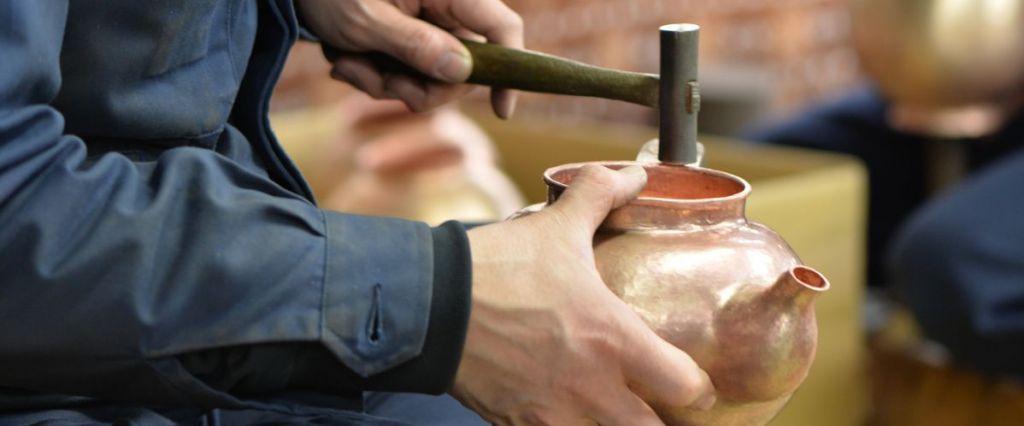
Niigata’s Traditional Crafts - A Legacy of World-Class Mastery
2025.10.09Niigata Prefecture is home to traditional crafts shaped by the daily life of the locals that live in this snowy region and its natural environment. With 14 production areas and 17 Traditional Crafts designated by the Minister of Economy, Trade and Industry, Niigata ranks second nationwide for the number of such designations, up there with Tokyo and Kyoto. From delicate, handcrafted textiles to metalworks hammered from single sheets and elegantly carved wooden lacquerware, this article introduces the wonders of several of Niigata’s traditional crafts and where you can experience them firsthand. Keep reading to explore the beauty and craftsmanship of these local crafts and discover Niigata’s authentic artistry.
Echigo Jofu and Ojiya Chijimi - Textiles Nurtured by the Snowy Climate
Both textiles share the same origin, but the plain weave textiles produced mainly in the Minamiuonuma area are known as “Echigo Jofu.” In the Ojiya area, three types of fabrics are produced: “chijimi,” “tsumugi,” and “momen,” but the most celebrated is “Ojiya Chijimi.” This premium textile is made by using tightly twisted weft threads, which are then washed in hot water to create a distinctive and beautiful crinkled texture called “shibo.” One of the most unique aspects of these two textiles is the traditional bleaching process called “yukizarashi,” where woven cloth is laid out over the snow and exposed to sunlight, creating a natural chemical reaction that whitens the fibers. The process usually occurs around March every year, making it a seasonal spectacle unique to Niigata’s heavy snow climate.
Takuminoza and Orinoza Ojiya Textile Workshops
- Address: Ojiya City Sogo Sangyo Kaikan in Sun Plaza, 1-8-25, Jonai, Ojiya-shi, Niigata
- Access: From Ojiya Station on the JR Joetsu Line, take a bus for about 5 minutes and get off at the Sun Plaza-mae bus stop
- Phone: 0258-83-2329
- Hours: 10:00 am - 5:00 pm
- Closed: Wednesday, beginning and end of year holidays (December 29 – January 3)
- Price: Free admission; Coaster-making workshop: Adults – 1,200 JPY / Elementary school students – 800 JPY
- Parking: 70 passenger car spaces, 6 large bus spaces
Murakami Carved Lacquerware - Dynamic Carvings and a Splendid Sheen
Murakami Kibori Tsuishu Hall
- Address: 3-1-17, Matsubara-cho, Murakami-shi, Niigata (Inside the Murakami Tsuishu Business Cooperative)
- Access: About a 10-minute walk from JR Murakami Station
- Phone: 0254-53-1745
- Hours: Weekdays 9:00 am – 4:00 pm; Saturdays, Sundays, national holidays 10:00 am – 4:00 pm
- Closed: Beginning and end of year holidays, Obon holiday, Murakami Grand Festival (July 6 and 7), and Sundays from December to April (Operating days are subject to change)
- Price: Chopsticks workshop – 1,000 JPY; Teapot coaster workshop – 2,000 JPY
Artisans can apply the lacquer finish and deliver at a later date.
(Chopsticks: Lacquer finish – 1,000 JPY, Domestic shipping – 500 JPY; Teapot coaster: Lacquer finish – 2,000 JPY, Domestic shipping – 500 JPY)
*International shipping is available. Please inquire about shipping fees. - Parking: 5 spaces
- Other: Workshops must be booked 1 week in advance.
Tsubame-Tsuiki Copperware - Infinite Possibilities from a Single Sheet of Copper
The coloring method involves a chemical reaction on the copper surface and is one of the unique characteristics of Tsubame-tsuiki copperware. The appearance ages over years of use and care, adding to the beauty and appeal of the craft.
Gyokusendo (Tsubame Main Store)
- Address: 2-2-21, Chuo-dori, Tsubame-shi, Niigata
- Access: An approx. 5-minute walk from JR Tsubame Station
- Phone: 0256-62-2015
- Hours: Weekdays 8:30 am - 5:30 pm
*Workshop tours offered 5 times a day at 10:00 am, 11:00 am, 1:00 pm, 2:00 pm, and 3:10 pm - Closed: Sunday and national holidays
- Price: Free (Groups of 6 or more are charged a fee)
- Parking: 22 passenger car spaces, 1 large vehicle space





